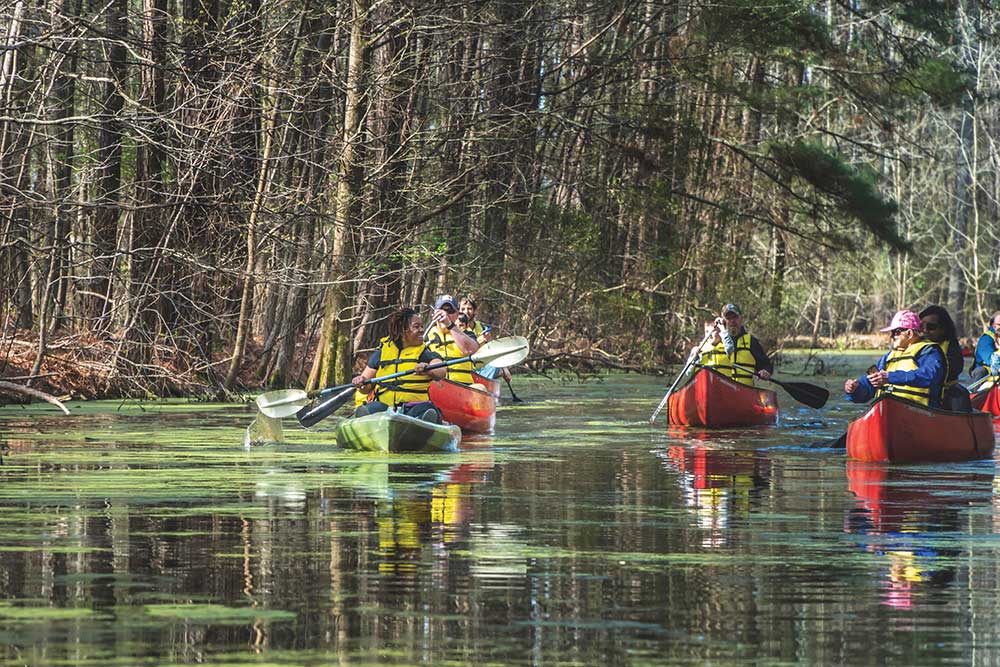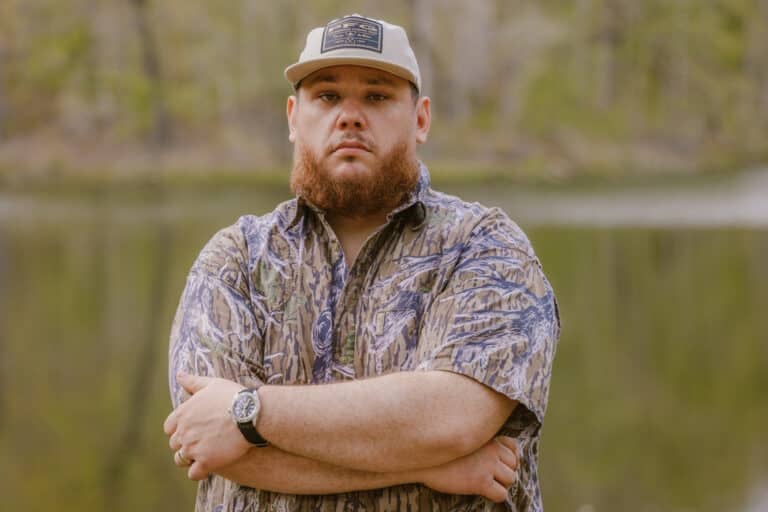Nakiesha Bridgers leads a trip on the river.
How did outdoor professionals get their start?
As more people are headed outside, outdoor recreation is increasingly an economic factor for towns and states across our region. Virginia just became the fifteenth state to establish an Office of Outdoor Recreation.
In its most recent report, the Bureau of Economic Analysis found outdoor recreation accounts for around 2.2 percent of the U.S. GDP. That’s billions of dollars Americans are spending and thousands of jobs they are supporting.
So, who are the people protecting these spaces, keeping you safe, and making sure you have a good time outside? And how did they get there?
Outdoor Recreation
When Nakiesha Bridgers studied biology in college, she thought she would go into teaching or the medical field. That is, until she found out outdoor recreation specialist was a full-time position.
“My dad always told me follow your passion and everything else will follow,” Bridgers said. “It feels like sometimes in society it’s about following that degree, following where the money is. But when I finally just let go and accepted this is what I enjoy doing, it let me find a way to do this.”
Her role with the city of Suffolk, Virginia combines everything she loves about the outdoors as she creates programs to get more people outside.
“It is what I make it,” Bridgers said. “I do conservation, education, and recreation, all in one. I spend my free time in the outdoors anyway. They pay me to do what I love.”
She uses her instructor certification from the American Canoe Association and USA Archery to lead canoe trips down the river and teach introductory archery classes. Other times, her programs focus on outdoor skills like building fires and pitching tents.
“We have this natural environment, and it’s a gift to us,” Bridgers said. “I want to teach people how to really love and appreciate it. It’s important to figure out ways that you can introduce people to the outdoors in a way that makes them feel comfortable. You have to meet people where they are. I don’t think there’s any traditional route to doing this.”
Even if you haven’t found your dream job, Bridger said there are ways to prepare for when you eventually find it.
“Find a way to incorporate your passion in the job that you have now,” she said. “When it is time, when that job does become available, you’re able to say this is how I was able to make a difference. Because your passion will show in that area.”
Search and Rescue
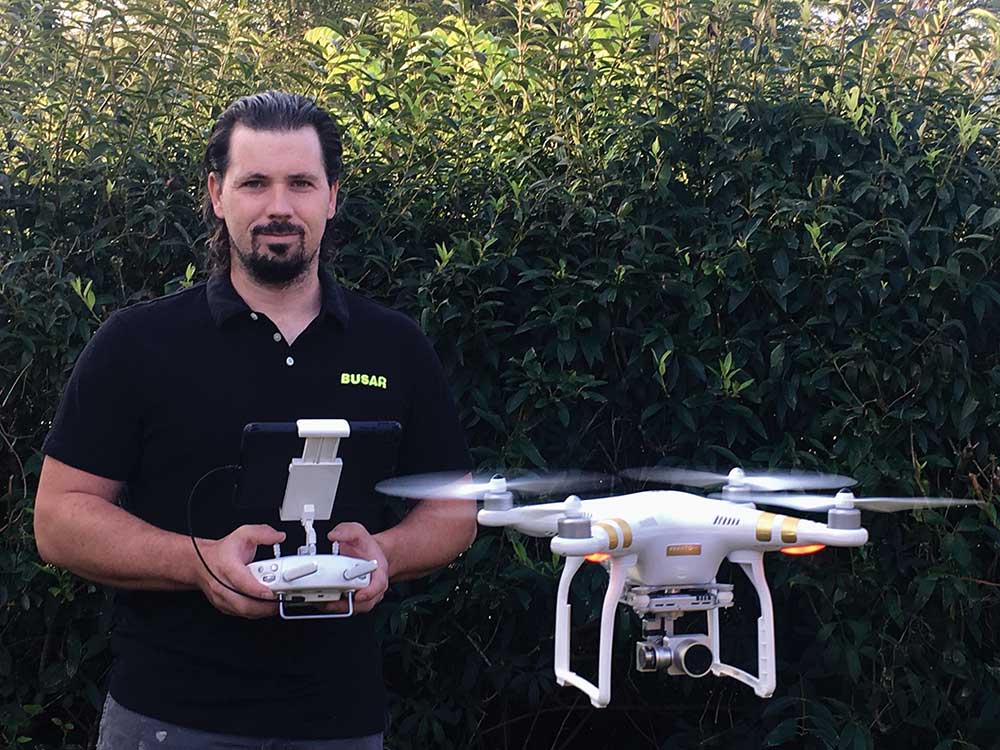
When his father suggested they use a drone to help with roof inspections, Luke Ritter saw the potential for the technology beyond construction. He started a business as an aerial real estate photographer to help people show off their homes.
That’s how Andrew Herrington, founder of a search and rescue team operating in the Smoky Mountains, found him. Team BUSAR was looking for someone to develop a drone program that could assist in backcountry missions.
“We’re putting something in the sky and trying to find people on the ground super quick,” Ritter said. “That’s one of the benefits of drones. It’s very easy to deploy. We’re talking minutes instead of a few hours. When someone’s in trouble, that’s the difference.”
As the team’s unmanned aerial systems specialist, Ritter has a Remote Pilot Certificate from the FAA that he must renew every two years.
“It’s looked at as a manned aircraft, and we have to treat it as such,” he said. “When we put something up in the sky, we’re very cognizant of what’s on the ground in the event that those things crash. It’s technology. It’s not perfect. It messes up.”
Part of Ritter’s job in building up the drone program is networking with others in the field on the best ways to use the rapidly changing technology, such as attending the annual Public Safety UAS Conference and working with the Oak Ridge National Lab to develop a drone better suited for backcountry SAR work.
Right now, most affordable drones have trouble penetrating the canopy forest, struggle with long-range communication, and don’t have a very long flight time. Adding sensors to see through the canopy and designing models that could be carried in a backpack on long treks through the mountains could increase a drone’s usefulness in search and rescue scenarios.
If you’re looking to get into unmanned aerial systems, Ritter emphasized knowing your stuff before even buying a drone.
“Don’t just go to Best Buy, get a drone, find a field, and start flying it,” he said. “That’s the impulse, and I understand it. There are safety aspects you don’t think of because you’re so excited to fly this awesome piece of technology. But know the regulations, know what the FAA requires, and understand what that drone can do, both good and bad, before you even get in the air.”
Environmental Protection
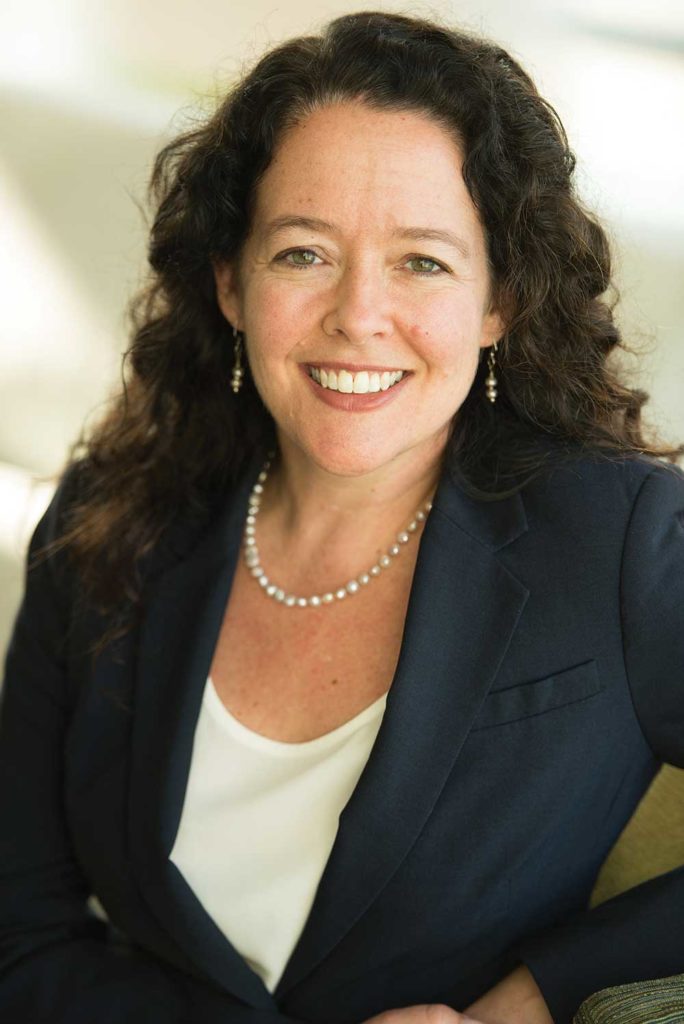
Sierra Weaver 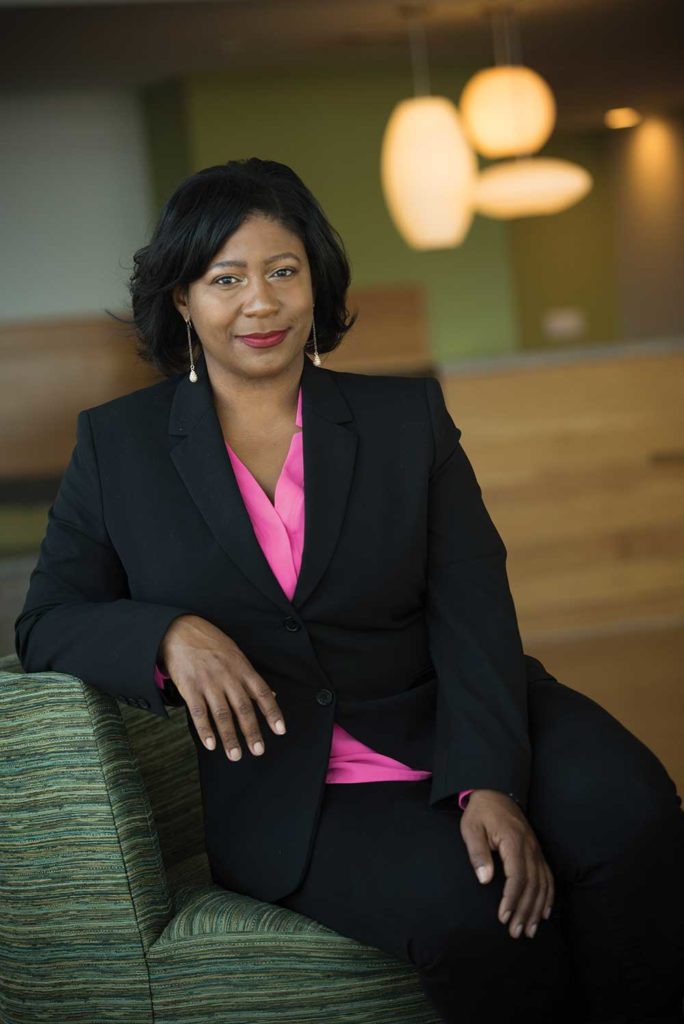
Chandra Taylor 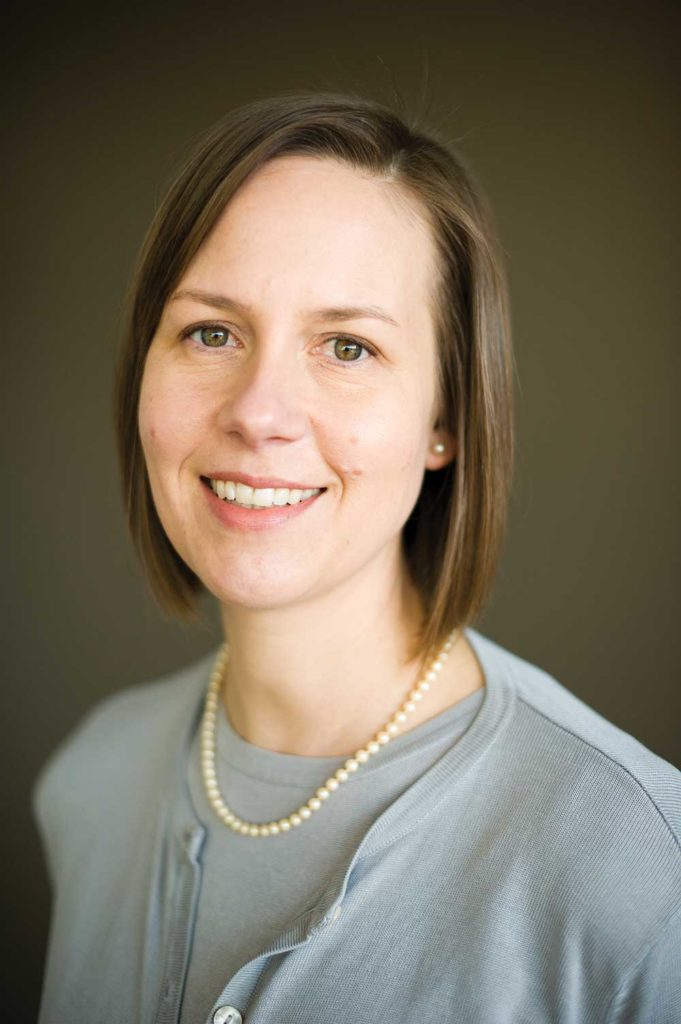
Gudrun Thompson
On any given day, the lawyers at the Southern Environmental Law Center are working on any number of environmental issues. Working at the local, regional, and national level, these attorneys want to ensure the land, water, and air can be enjoyed for generations to come.
They might be fighting to protect water quality like Chandra Taylor, who knew she wanted to work in the public interest when she went to law school. At SELC, water quality issues were a natural fit.
“For me, it’s very tangible,” she said. “Water is one of those things that everybody understands we want. We want enough water, and we want it to be drinkable, fishable, swimmable. So, it resonated as a resource that should be protected.”
As an attorney, Taylor’s job is about more than arguing cases in a courtroom. She regularly visits the sites she is trying to protect, monitors self-reporting facilities to ensure they comply with wastewater treatment guidelines, and actively work to prevent environmental harm before it happens.
“In order to actually allow us to enjoy being outdoors and have clean water, we’re having to monitor these really small units,” Taylor said. “If we let it get so far that humans are getting sick from drinking contaminated water or breathing air that has so many particulates in it that we can’t even take a deep breath, then we know things have become really bad.”
They might be opposing offshore drilling on the coast like Sierra Weaver, whose interest in coastal protection began at a young age when her father was diagnosed with chemical poisoning. Her family moved to the coast to get away from the things that were making him sick.
“Protecting those areas are really important for people to be able to breathe the air, drink the water, and have a clean environment to live in,” she said. “But also, to be inspired and to experience awe.”
According to Weaver, one of the leading threats to the Southeast coast is offshore drilling for oil and gas.
“The one thing that is very clear is that when offshore drilling gets into an area, it doesn’t get out of an area,” she said. “Whether we’re saving wetlands or preventing pollution, all of those victories are potentially at risk with this potential of opening that up to offshore drilling.”
That is in addition to the global threat of climate change.
“Climate change is remaking our coast, and so what does that mean for protecting the places we love, protecting public access, and protecting our national wildlife refuges and national seashores?” Weaver said. “The need for those protections is even greater as our population continues to grow. These are issues we are all going to need to grapple with.”
Or they might be advocating for clean energy like Gudrun Thompson, who started her career as a gardener before making the transition to law.
“I liked that work, but I started feeling like I was seeing a lot of unsustainable development, more forest and farmland being gobbled up by big, suburban developments,” she said. “I was feeling like I wasn’t helping to address the root causes of some of our really serious environmental problems, like climate change.”
Now Thompson focuses on projects like energy efficiency, natural gas pipelines, and alternative energy sources.
“Our region is pretty utility friendly in a lot of ways,” Thompson said. “There are really powerful interests that are opposing what we’re trying to do. We have utility companies and other polluting industries that have deep pockets and a lot of political power.”
The challenge is to decide which issues need the most attention.
“We can’t take on every worthy project or case that we would like,” Thompson said. “Even though we’ve got a big organization with a really great legal team, we don’t have unlimited resources. We have to make hard choices about the kinds of cases we’re going to take on.”
But environmental protection is not just a job for lawyers.
“We’re in the courts and legislatures,” Taylor said. “We’re working with agencies. That is our approach. But everyday citizens can be making decisions that are helping to protect the environment for everybody. We all need somewhere to live. There’s not a plan B for us if we don’t protect what we have here.”
Adventure Sports
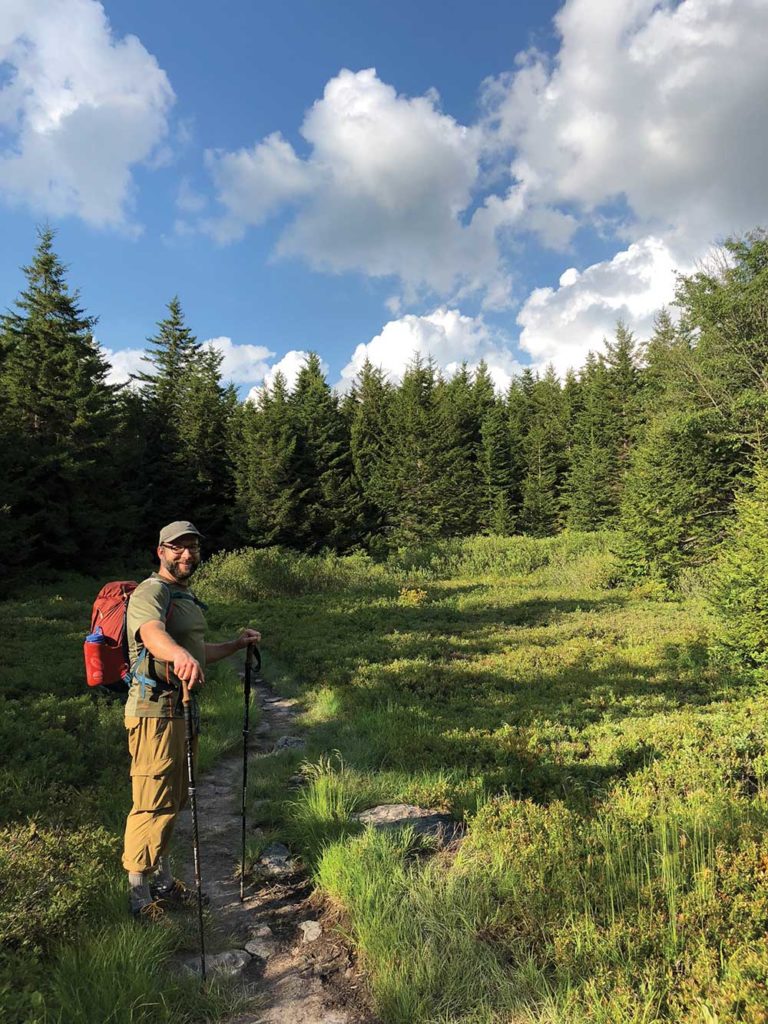
Thomas Sheaffer has come full circle, working at the very place he learned how to snowboard as a teenager.
At Wisp Resort in Maryland, his job differs depending on the season. As safety coordinator, he ensures the staff has the proper training and personal protection equipment. In the warmer months, he oversees the bike center where the resort provides rentals and intro to mountain bike classes. And in the winter, he heads up the ski tuning shop, making sure guests are prepared for the slopes.
“When you work in the outdoor recreation industry, you’re wearing a lot of different hats,” Sheaffer said. “It’s rare that you’re wearing one hat and you’re doing one thing year-round. That’s challenging to get pulled in different directions but it’s also one of the things that attracts the full timers and lifers. It makes it fun because you’re able to do different things seasonally.”
Sheaffer got his start in the outdoor industry leading trips for the Army’s Morale, Welfare and Recreation Division in Germany. When he returned to the United States, he wanted to get an undergraduate degree in something he could build a lifestyle around.
Sheaffer was naturally drawn to the Adventure Sports Management program at Garrett College and Frostburg State University.
The classes were a combination of theory-based and skills classes. They covered a variety of topics, including bike mechanics, backcountry living skills, entrepreneurship, and risk management.
“It’s not just how do I keep people safe and minimize risk with inherently dangerous sports like rafting, climbing, mountain biking,” Sheaffer said. “But also, how do I manage the risk of my business, liability, barriers.”
Then students put their learned skills to the test with expedition planning.
“Experiential learning and education is a big piece of it,” Sheaffer said. “We have an immersion semester where we actually planned trips and traveled around along the Eastern seaboard.”
All of the things that he gravitated towards as a kid, snowboarding and mountain biking, were enhanced by the leadership and management skills he learned later in life. Now Sheaffer gets to share his passion with beginners and other instructors, helping to inspire new adventure seekers.
Riverkeeper
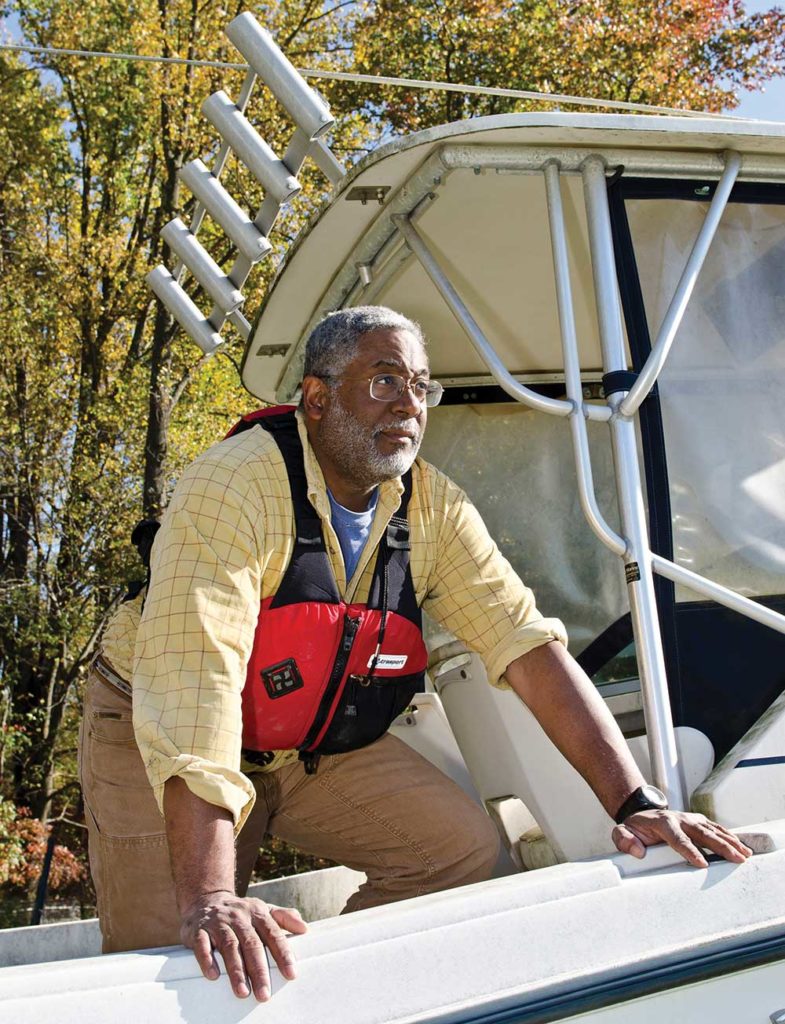
For most of his career, Fred Tutman traveled the world as a television and radio journalist.
“There became a point where I felt my social conscience got the better of me,” he said. “We got to look and see a lot of things going on around us, but through the lens of a journalist, we really couldn’t be advocates or activists.”
In 2004, Tutman founded the Patuxent Riverkeeper to help restore the river in his community.
“In some respects, we embody the hopes and aspirations for a whole community of people around a particular body of water,” he said. “Those are the people who really pay attention to what we’re doing anyways, the people who already care about that water. Other people care in a general way, but they’re not reading our newsletters, they’re not engaged, and they’re not volunteering with the organization.”
Tutman is part of a network of waterkeepers around the world fighting to protect the water we drink, fish, and swim every day. They employ any number of tactics, from monitoring the water quality and raising awareness to filing litigation to clean up or prevent contaminants from entering the waterway.
In the decade and a half that he has been doing this work, Tutman said it can be hard to maintain the energy, stamina, and focus needed to keep fighting for this single body of water.
“You can go and get paid to clean up a stream after somebody else screwed it up with toxins,” he said. “I’d much rather fight pollution at its source because then we won’t have to keep cleaning these places up… Are we ensuring there will always be a lot of jobs doing good or are we really working to change what’s wrong with society so maybe someday we can retire those jobs? We won’t have to have full time environmentalists because it’ll be embedded in the system.”
Instead of relying on corporate funding and grants, Tutman has centered his work around community-based donations from the people whose lives depends on the Patuxent River.
“There’s a world of difference between the work that changes the world and the work that people are inclined to pay you for,” Tutman said. “Symptoms are easy. It’s easy to find a job that will help you fight symptoms. Underlying problems require structural change, which is considered revolutionary. And revolutions aren’t funded.”
Education
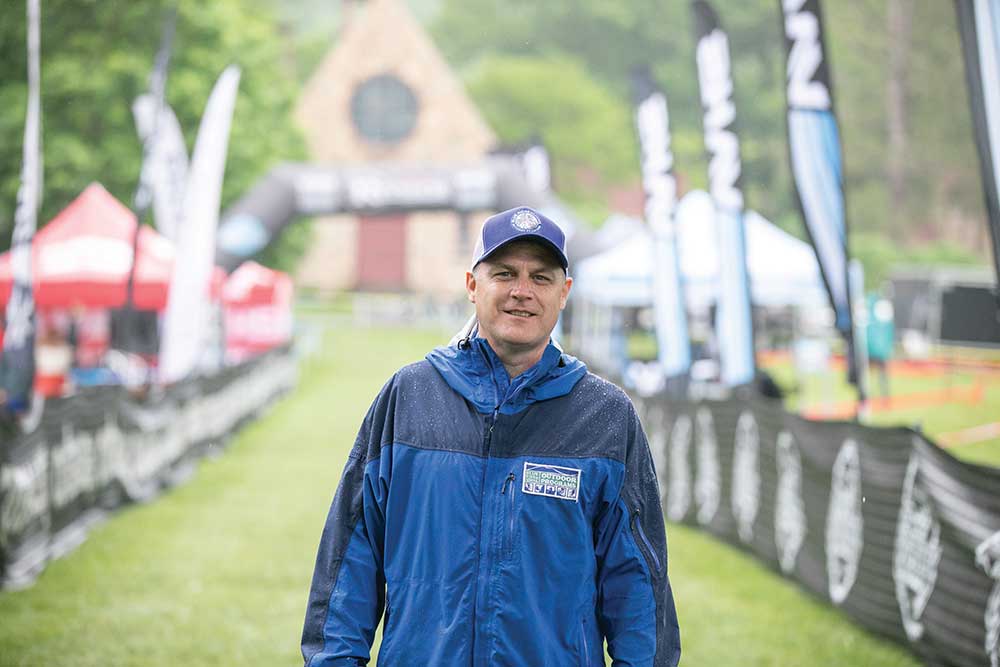
Tony Brown. Photo by @VAHSMTB 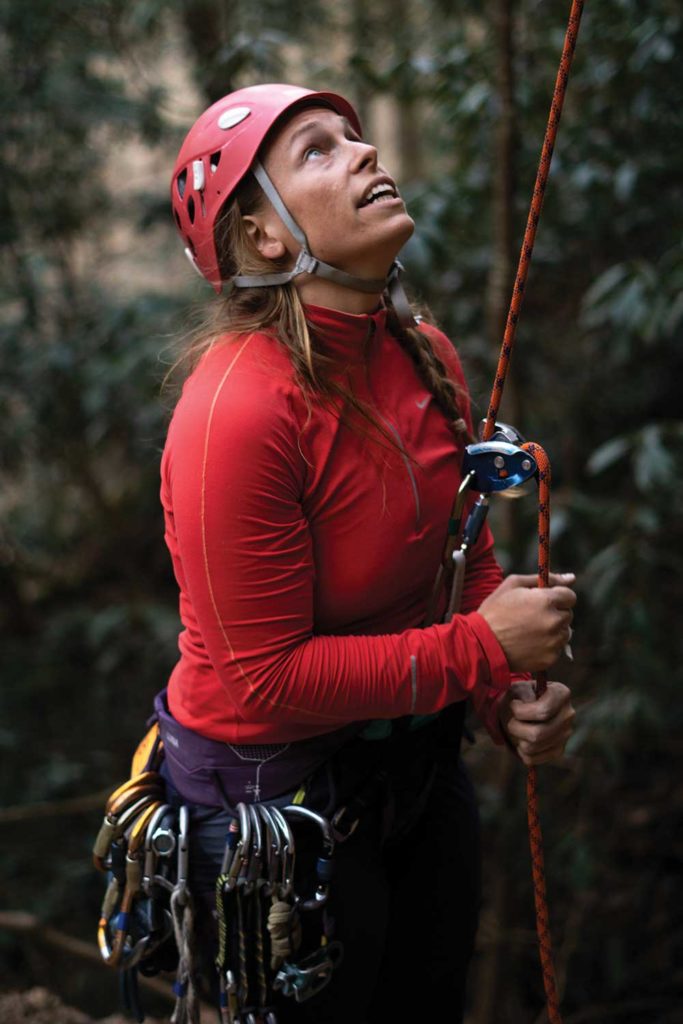
Katie Richards. Photo by Henry Ley
When Tony Brown was asked to build up the outdoor program at Blue Ridge School in 1998, it was just an afternoon activity. Now, the program is an integral part of the school.
“Money doesn’t make a program,” Brown said. “People, time, and the administration supporting it do. I had to figure out what to spend the money on and what battles do I want to fight. In the last 20 years, we’ve seen more and more students kind of run away from traditional sports. It becomes more of a natural fit and you don’t have to sell it quite so hard.”
Each trimester, the all-boys boarding school offers outdoor electives just like they would computer science, music, or art. Students can enroll in classes like outdoor living skills, wilderness first aid, or outdoor service learning.
In the afternoon, students participate in any number of activities, such as the climbing tower, trail maintenance, paddling, and caving. Over 15 miles of trails on campus are open for hiking and mountain biking.
“We have so many things going on that it’s a little difficult to manage,” Brown said. “The trail system is huge now. On certain days, it’s crowded. You have a mountain bike team, an outdoorsman group on a run, an outdoor program doing something, and a cross country team on a run.”
Working at a residential school, Brown is able to interact with the students in all aspects of their lives, from seeing them in class and on campus to coaching them on the mountain biking team.
“Every kid who graduates does something in the woods,” he said. “When kids are graduating, I can say almost 99 percent of the time, that kid did this trip or that kid was on this team. That took a lot of work to get to that point.”
At The Asheville School, Katie Richards is facing a similar situation. Although the outdoor program has already been established, the new director of mountaineering is working to make the activities more accessible to a wide range of students.
“Our modern sense of mountaineering is big, steep snow or ice on big mountains,” Richards said. ”The older understanding of mountaineering is more an ability to appreciate, be safe, and enjoy the outdoors and to share that with other people. That’s the definition that we’re working off of. There is certainly opportunity to take trips that have involved those more serious expedition type experiences. But I think the main goal of mountaineering is to prepare students to be able to make their own way in the world, feel confident, be kind, and take risks that are appropriate and thoughtful. I think it is really healthy for high schoolers who may be experimenting with risk in other ways to be able to think about what they’re doing, why they’re doing it, what the outcomes may be, and how they can mitigate undesirable outcomes.”
Richards brings all of her knowledge from her recreation management program at Appalachian State University, her time as a Girl Scouts Ranger in Utah, and her experience building an outdoor program for University of Wisconsin-Milwaukee, to working outside with high schoolers who are still trying to figure out who they are.
“High school is just a hard time for everybody,” she said. “Seeing authenticity and some vulnerability coming out of people who are going through a hard time in their lives is the best reward I could ever have. Being in a place where you’re dependent on others, and where you feel awe and inspiration, all of that stuff naturally goes away. I don’t think you can say that about a lot of environments. You can’t go to the mall and find that everybody’s being themselves all of a sudden.”
Plus, she gets to spend her summer climbing, biking, and skiing.
“It’s not just a vacation, it’s professional development,” Richards said. “I am getting to be better for my students by doing what I naturally want to do anyway, which I think is the pinnacle of everything. It’s so great to work in a field that brings you joy, helps you understand humans and yourself better, and challenges you. All of those things are really important to me.”
